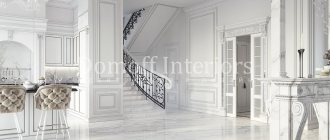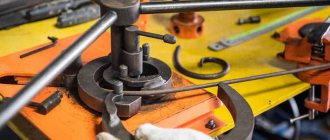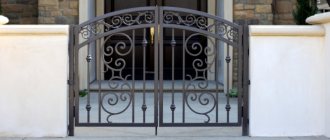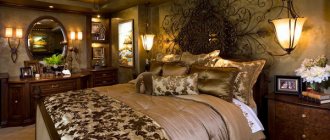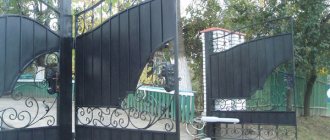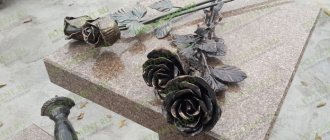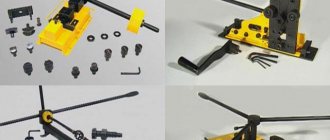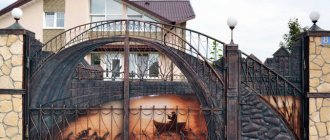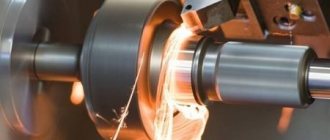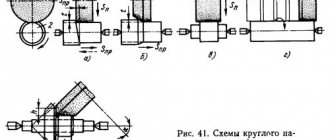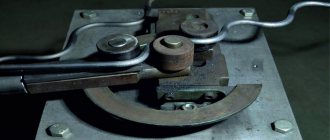01/16/2019 Author: VT-METALL
Issues discussed in the material:
- What are the elements of artistic forging?
- What types of technologies exist for manufacturing artistic forging elements?
- What are the classic tools for forging artistic elements?
- What stages does the production of artistic forging elements include?
- What are the advantages and disadvantages of artistic forging
The art of artistic metal forging originated a long time ago, at the dawn of humanity. In all centuries, the work of craftsmen who tamed the elements of fire and metal was considered a magical craft. Blacksmiths managed to create works from a piece of metal that were incredible in their beauty, striking the eye with the elegance of their forms and expressiveness of their lines. We still admire the forged fences of medieval castles and park ensembles, carved balconies of city houses, and metal household items. Elements of artistic forging combine solidity and confidence with extraordinary ease. The timeless craft has not lost its relevance today and is becoming increasingly popular. Modern masters, combining ancient technologies and progress, create amazing things.
We will try to talk in detail about the varieties and methods of producing artistic forging elements.
What are the elements of artistic forging?
Artistic forging is a metal processing method through which elegant products for household and decorative purposes are made. As a rule, elements of artistic forging are made according to an individual drawing (project), embodying exclusive design ideas, so the finished product acquires artistic value.
The heyday of the craft dates back to the 14th-15th centuries, especially the Renaissance period, when the fashion for creating landscape gardening ensembles arose and began to actively develop in Western European countries. Elements of artistic forging, used in the construction of figured fences, gave the building monumentality, respectability, and indicated the wealth of the owners. One of the main customers of medieval blacksmiths was the church.
Elements of artistic forging of the Baroque period were distinguished by their particularly splendid details and pretentiousness of patterns. Rococo radically changes the appearance of forged products; symmetry and strict geometric shapes disappear, but plant motifs appear and filigree techniques are used.
In Ancient Rus', elements of artistic forging were widely used in the manufacture and decoration of warriors’ armor, horse harness, and weapons. Blacksmiths have always been held in high esteem; blacksmithing was especially respected. Gradually, communities of craftsmen were formed who moved from rural areas to large Russian cities and organized entire blacksmith productions there.
VT-metall offers services:
The production of forged products received a new impetus during the time of Peter I, a supporter of everything European. Elements of artistic forging became very popular in architecture; they were used to decorate the palaces of the nobility and secular institutions.
The first quarter of the twentieth century - the time of industrialization - brought rolling and stamping production to the forefront, pushing artistic forging into the background.
Nowadays, the art of artistic forging is experiencing a new birth. Interest in the ancient craft is completely predictable and justified. Forged products combine practicality and beauty, monumentality and grace, and serve as interior decoration for apartments, summer cottages, and country houses.
Forged furniture items are in good demand: beds and sofas, benches and chairs, tables and decorative consoles, hangers and flower stands, fireplace accessories and grates, railings and stair steps, chandeliers, sconces, floor lamps and much more. All these products are able to emphasize the individuality of the interior. Landscape design widely includes forged benches and bridges, all kinds of fences, swings, gazebos, arches, figured groups, flower stands, gates, door hinges and handles.
A variety of forged products allows you to choose any according to your desire. You can rely on your taste or take advice from experienced designers.
Blacksmith School
In 2022 the company turns 10 years old. During our work, our specialists have accumulated experience in equipping three workshops with safety requirements there. Much attention was paid to the quality of work performed. Along with the traditional method of metal processing, non-standard technological methods were used. The work was accompanied by project activities. We are happy to share our accumulated experience and knowledge with you on the pages of the Blacksmith School. Our colleagues and friends will be happy to talk about practical skills. You can find contacts and ask questions directly to the master. The ELEMENT company will help young specialists master the skills of blacksmithing and metal processing. On the pages of the “Blacksmith's Apprentice” section we will give specific recommendations for organizing a workshop, talk about materials and processing technology. About the variety and purpose of tools and equipment.
Manufacturing technology for artistic forging elements
There are cold and hot forging. Let's figure out what the features, pros and cons of each type are.
- Cold forging
For the manufacture of products, standard stamped blanks are used, which, with further mechanical processing, acquire the desired bends and shapes. Then the parts are joined into a single whole using spot welding, without heating the entire structure. Typically, regular iron or low carbon soft steel is used.
Items made by cold forging cannot be called exclusive or highly artistic. However, they require less time, which allows you to produce more products at a fairly low price.
The advantages of cold forging also include:
- lack of heating process;
- high productivity;
- coating strength;
- accuracy of dimensional parameters;
- interchangeability of parts;
- the ability to reproduce and repair damaged parts.
We recommend articles on metalworking
- Steel grades: classification and interpretation
- Aluminum grades and areas of their application
- Defects in metal products: causes and search methods
Disadvantages of cold forging:
- simplicity of the form of the resulting elements;
- a large number of equipment and devices for metal processing;
- deformation of the structure over time (due to the lack of heat treatment, the bent metal will tend to return to its original shape).
- Hot forging
During the hot forging process, the metal is heated to 1200 0 C in a special furnace. Then the blacksmith, using hand tools, gives it the required shape, after which he cools the finished product in a barrel of water. During the cooling process, the metal is hardened, which subsequently gives the forged items special strength and resistance to external phenomena.
The production of artistic hot forging elements requires special professionalism. The labor-intensive process allows you to create unique items, designer, exclusive products that are much more expensive than cold forged ones.
If we talk about the disadvantages of hot forging, then it is worth mentioning:
- low labor productivity;
- high cost of finished products;
- lack of possibility of interchangeability of individual elements;
- low accuracy of compliance with specified dimensions;
- the impossibility of creating similar products for wide consumption.
In general, comparison of two types of forging - cold and hot - is not entirely correct. Which method is better in a particular case depends only on the task set by the customer.
Individual forging elements and their production
Each individual component of a forged product has its own manufacturing technology. Elements can be produced hot or cold using blacksmith techniques.
With the hot method, blanks for objects are heated to malleable temperatures (800-1300 degrees), as a result of which it is easier to obtain the required shape.
However, many forging elements are produced using a cold process. This technology involves the use of torsion, bending and other methods without high-temperature heating of the workpieces. Only sometimes can workpieces be heated to 200-250 degrees during cold processing.
The advantage of cold metal processing is greater precision in the manufacture of parts and the absence of material loss (in the form of scale).
Hot forging of elements is easier in terms of obtaining the required shapes.
Also, in the manufacture of forged product elements, forge welding technology is used, when individual parts are heated and connected to each other by hammer blows. However, today this technique is most often replaced by electric welding of metal.
What elements of forged products are made using these methods and techniques?
Classic tools for forging artistic elements
Ancient and medieval blacksmiths made do with a simple set of tools, which necessarily included:
- forge forge – a special furnace for heating a metal workpiece;
- bellows for fanning coals manually;
- anvil - a metal support for hand forging;
- hammers, mallets, sledgehammers, handbrake hammers (small hammers for the most elegant products);
- mites;
- vices and clamps for fixing the product;
- tools for shaping the future product - mandrels, chisels, rolling tools, smoothers, etc.;
- container with liquid for cooling the finished structure.
Having equipment that could easily be transported from place to place, craftsmen often traveled and could quickly set up a forge in any place. Even nomadic tribes used portable forges and anvils on their campaigns to forge new arrowheads, shoe horses, repair military armor and horse harnesses, and straighten damaged steel blades.
Over time, stationary forges began to appear, in which large forges and anvils, bellows with hand and foot controls, and durable workbenches with fixed vices were installed. Each era added new tools to blacksmithing or modified already familiar ones. Precise measuring instruments appeared.
Blacksmiths began to work not alone, but with apprentices, who were also distinguished by great endurance and physical strength. The duties of the apprentice included the task of inflating the bellows and heating the blank red-hot in the forge.
In a modern workshop for the artistic forging of metal elements, the set of tools used has remained virtually unchanged, only the blanks (forgings) are now heated in muffle furnaces or induction. Classic blacksmith's forges and bellows are installed only in museum exhibitions, trying to completely recreate the process of the ancient craft.
Equipment for cold forging is distinguished by the presence of a variety of machines: for a full production cycle, at least 5-7 of them will be required. Often craftsmen make them themselves from scrap materials.
Low production costs and initial equipment costs are the reason why cold forging has become widespread.
Stages of manufacturing artistic forging elements
Depending on what metal is used and the final task facing the blacksmith, he will have to perform a number of technological techniques and operations:
- Draft.
Upsetting is the basic forging operation and is done to increase the cross-sectional area. The effect is achieved by squeezing the blank from the ends. There is a complete upset, when the entire workpiece is deformed, and local, in which only a certain part of the metal undergoes changes. Accordingly, heating is also carried out complete or local.
Typically, sludge is used:
- To obtain separate thickenings on the forging for further forging decorative elements in their place. For example, a floral ornament, which consists of individual thickened elements on the stem (flowers, berries, buds), is obtained after additional processing by crimping and tamping.
- To replenish missing metal when forming various angles.
When upsetting, the blacksmith heats the workpiece to the maximum permissible temperature. The red-hot forging is placed vertically on the anvil and the top end is lightly struck several times with a sledgehammer to ensure stability. The force of the blows gradually increases, and after each of them the forging, held by the pliers, is rotated around the axis at a small angle to ensure uniform settlement.
To avoid bending of the workpiece, it is necessary to take into account that the length of the forging should not exceed its diameter by more than 2-2.5 times. Upsetting is done with a hammer, sledgehammer or handbrake. In special cases, when the length of the blank is short and there is no way to fasten or grasp it with pliers, the craftsman strikes the forging itself against the anvil. The workpiece should be straight, and its ends should be cut at an angle of 90 °.
When making bolts and large construction nails, it is necessary to deposit metal in a small area with a noticeable difference in cross-section. The blacksmith quickly lowers the heated workpiece into cold water without touching the area to be upset.
- Hood.
Drawing is the reverse operation of upsetting, when the length of the workpiece needs to be increased. The operation is performed in the following sequence: the heated metal is placed on an anvil and pulled out with blows of a hammer or sledgehammer. The workpiece is turned 90° and struck again, this time along the convexity from the previous blow. Gradually, the blacksmith moves the hammer along the forging, increasing its length due to the transverse grooves that are formed during the drawing process. The more of them and the stronger the blows of the sledgehammer, the longer the metal workpiece becomes.
You can speed up the drawing process if you use the anvil horn and pull the product between a pair of bulges.
Sometimes the blacksmith performs drawing by rolling out (rolling) in the direction from the center line to the edges of the workpiece. Successive blows form a ribbed surface, most often of a semicircular shape. At the end of the distillation, the product is treated with smoothing irons.
The hood at the end is used in the manufacture of nails, nails, punches, jigs and other products.
- Chopping.
During this operation, the workpiece is divided into parts. The forging, heated to a bright red color, is placed on the anvil and, using a chisel, is cut through three-quarters of the thickness. Then, turning the workpiece over, they finally cut off the desired piece with a strong blow to the chisel. When cutting thick workpieces, the chisel is periodically cooled by lowering it into a container with cold water. Adhering drops must be shaken off the instrument by lightly tapping the base of the anvil.
When working with cutting tools, you need to be especially careful not to damage the anvil face. Blacksmiths usually use special pads.
- Cutting (cutting).
This is the name of the operation when the workpiece only needs to be cut. The technique is widely used in the manufacture of artistic forging elements. The cut sections of metal are bent, stretched, subjected to special processing and, in the skillful hands of a craftsman, are gradually transformed into wonderful flowers, leaves, fruits and other elements of complex patterns and ornaments. The cutting operation is especially popular for the production of svetzets, zhikovins and other products.
The workpiece is cut only from the front side. Mark a groove with light blows. To allow time to slowly cut the metal, the workpiece should only be slightly warmed up. After cutting, the metal is highly heated and cut through with one sharp, strong blow.
- Trimming (cutting).
In the process of forging complex decorative shapes, a trimming operation is performed. In another way it is called pruning. It is used to remove a layer of metal along the outer contour.
- Felling.
This process is similar to cutting, the only difference being that the metal must be removed along the internal contour. The blacksmith uses half-round, angle, straight and other chisels.
In order for a hole to appear in a metal workpiece, it must be punched. The operation is performed at high temperatures. A punch (punch) is installed in the area designated for the hole, and blows are struck with such force that it penetrates at least three-quarters of the thickness of the workpiece.
Without removing the punch, the workpiece is placed so that the location of the intended hole is strictly above the round hole of the anvil. A small force blow is applied to the punch, which causes metal to bulge on the lower part of the workpiece. After the next blow, a mark should remain on the convex place, indicating the places where it is necessary to make a hole. The punch is removed and cooled. The product must be turned over and the beard with the cone-shaped working part must be installed at an elevation above the hole. Please note that the beard should be slightly smaller in diameter than the final hole size.
- Flexible.
To give the elements of artistic forging curved outlines, bending is carried out. In order to avoid distortion of the shape when bending (usually manifested during operations with thick layers of metal), it is necessary to settle the working area before starting manipulations. When bending thin workpieces, this can be neglected. The shrinkage phenomenon will be more pronounced the smaller the radius of curvature and the larger the bend angle. It is possible to return the original cross-sectional shape of a forging by ironing and straightening.
The following types of bending are distinguished:
- Bending at right angles is carried out when heated metal is clamped in a vice, and a blow is applied to the end of the workpiece. A sediment of material is formed in the bend area, which is necessary to straighten the angle.
- Corner bending is performed with a heated bending area on the edge of the anvil. The metal is installed in such a way that the edge of the intended bending and the front edge of the anvil coincide. They are pressed from above with a sledgehammer, and then hit with a handbrake, but not at the end of the forging, but closer to the edge of the anvil.
- Arc bending is carried out on the anvil horn. Complex elements are bent using mandrels, special templates and a bending plate.
- Pattern bending is necessary when the product contains several identical elements of artistic forging. The template is made from a fairly thick strip of metal, mounted in a vice or on a lining and bent around a heated workpiece. It is necessary to strictly observe the specified proportions when making the template, since all future elements will only copy it.
- To produce conical spirals, bending is done on the cone.
- Sometimes bending without a cone is used, resulting in a finished product in the form of a spiral.
- Twisting.
The essence of the operation is to wrap one forging relative to another around a single axis. There are two possible ways:
- Twisting a fragment of the future product at an angle of up to 180°. For example, in plant patterns, individual elements - leaves, buds, flower stems - are bent for expressiveness. The operation is performed with a handbrake on the anvil horn on the shperak. Very small parts are tightened with round pliers.
- Twisting the workpiece several times at an angle of 360°. This technique is often used in the manufacture of all kinds of forged gratings.
During the twisting operation, the metal must be heated to a bright red heat. This will allow the blacksmith to save effort and avoid deformation of the product that occurs at lower temperatures.
Twisting thin products requires the simultaneous work of a pair of craftsmen who, grabbing the workpiece with pliers at both ends, rotate it in opposite directions. Thick forgings are twisted using a collar, clamping one end in a vice. Wide tapes are fixed with a special fork during the procedure.
- Finishing (ironing).
Having forged the basic shape of the product, the blacksmith begins the final operation - finishing, when the workpiece is given a finished look. The main purpose of smoothing is to eliminate hammer and sledgehammer marks and to even out the waviness of the metal. When the product glows dark red, moving irons of various shapes over the surface and hitting them with a sledgehammer, the master removes visible blemishes and sloppiness.
To give special brightness and sophistication to the finished product, sometimes only certain sections of it are smoothed, for example, protruding parts, leaving the recesses untouched.
The finishing, final types of forging include the operation of applying patterns.
On the surface of the product in a cold or hot state, not only strokes and notches are applied with a chisel, but more complex patterns and even inscriptions. To do this, choose a flatter and more clearly visible part of the finished product.
The final finishing of a forged object also includes the operation of filling the relief and texture. Using special punches or punches, the blacksmith-artist applies additional relief protrusions, creates indentations, as if drawing veins on leaves and flowers, and turns smooth columns and columns into fluted ones.
Varieties of patterns
From volumetric rolled metal, blacksmiths create various designs, which include several components:
- Spiral . The diameter of the spiral sometimes decreases downwards and changes its direction to the opposite. The result is a very original pattern, in which the direction of the spiral is regulated by artistic design.
- Double-row spiral . The middle part has the largest diameter. This ornament is called “Chinese lantern”. To obtain such a pattern, large cross-section wire is used.
- Volute . The pattern has the shape of a curl, located in different directions. The volute has a unidirectional concavity, while the curls have one bending axis. When the curls are on both sides of the center of the workpiece, they speak of multidirectional volute.
- Cool . To form such an ornament, part of the rod is twisted around an axis. Twisting always occurs in one direction, since being in a plastic state, when twisted in different directions, the rod can collapse.
- Pommel . These details decorate window grilles, as well as various fences. The element is a small piece of rod, the end of which has a sharp edge. Several curls are attached to it.
Additional artistic forging parts are made from sheet metal. These include:
- Spatial spirals. The appearance is similar to an auger. The width of the spiral decreases in the direction of rotation. The part may have a relief appearance. To do this, artistic marks are made on the edges.
- Flat curl. The element is similar to the three-dimensional one, only a metal strip is used for manufacturing.
- Coinage. To obtain a pattern, spot processing of the flat surface of the part is carried out. The operation is performed on non-ferrous metal.
- Punching. A special stamp is pressed into the sheet. In this way, you can make a monogram, give the image a three-dimensional appearance, and also form an inscription.
- Headings. A bowl-shaped container is rolled up from the strip. It can have several forms depending on the pattern being created.
Using combinations of such artistic ornaments, you can create very beautiful blacksmith compositions, distinguished by their originality and uniqueness.
Advantages and disadvantages of artistic forging
Advantages of artistic forging elements
Making forged products allows craftsmen to embody their wildest creative ideas in metal. Using his own sketches or reproducing copies of generally recognized masterpieces, the blacksmith-artist creates works of applied art that are unique in their beauty. Even elements of artistic forging repeated many times by a master will, upon close examination, turn out to be different from each other.
Household items, interior and landscape design elements are not only beautiful and utilitarian in their purpose, but also quite durable and can serve their owners for decades.
Architects have long noted the ability of artistic forging elements to be combined with any building materials, be it brick, concrete, natural stone, wood and others. Order forged products for your garden, country house or city apartment and see for yourself their versatility. A large architectural form or small designer items will decorate the interior and exterior of your home and give it a respectable look.
Disadvantages of artistic forging elements
Artistic forging has almost no disadvantages, but we still note what you need to be prepared for when ordering a forged product:
- high cost of finished goods;
- long production cycle;
- difficulty in producing a large batch of identical products.
Features of the cold method.
Although the name indicates that forging occurs without heating, the metal can still be heated to 200 or 250 °C in some cases.
The technique is distinguished by the high accuracy of the relief of parts, allows you to work with sheet raw materials, and the ability to work with soft and pliable non-ferrous metals. In the absence of very high temperatures, scale does not form on parts.
As a result, to compose the finished composition, the manufactured parts are joined by “forge” welding, since there are no residual seams that need to be cleaned. Also, this welding has significantly increased strength parameters of the seam compared to conventional welding. But this affects the final cost, so the choice is usually made in favor of standard welding.
Outstanding performance of forged elements.
Each element is a unique detail, which creates an original overall design.
Coating with a special polymer composition prevents corrosion and extends the service life. Steel elements are characterized by increased strength properties. They are universally combined with each other and with any coating. A designer may be required to harmoniously select from many elements.
If it is impossible to use the services of an expensive designer, it is always important to get detailed advice from our professional managers.
